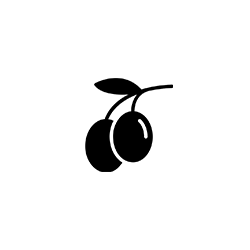Illustrious Personalities
Home > Illustrious Personalities
San Donato Val di Comino, nestled in the heart of Ciociaria, boasts a rich cultural and historical tradition, evidenced by numerous illustrious figures who have contributed significantly in various fields.
The scholar of San Donato,
Between papyri and ancient history
Giustino Quadrari was born on July 19, 1802, in San Donato Val di Comino, the son of notary Eugenio and Rosalba Tempesta. After completing his initial studies at the seminary in Sora, he continued his education at the Royal University of Naples, where he was a student of eminent scholars of the time. Under the guidance of Loreto Apruzzese, a native of Gallinaro, he delved into Roman and canon law, while Giuseppe Capocasale introduced him to natural law. Greek and Latin archaeology was passed on to him by Francesco Iavarone, and Giuseppe Maria Parascandolo perfected him in the Greek language. Ordained a priest in 1825, Quadrari distinguished himself for his vast culture and passion toward sacred archaeology and ecclesiastical history.
His dissertation "De natura Cattolici dogmatis" in 1829 opened the doors of teaching for him. In 1840, he was appointed Interim Professor of the History of Councils, a chair he held, under the new name of Ecclesiastical History and Archaeology, until the Unification of Italy. On October 22, 1832, thanks to his expertise in deciphering papyri, he was appointed Interpreter of Papyri of the Herculaneum Academy, later becoming its ordinary member and finally its president.
His literary activity was prolific: in addition to numerous unpublished manuscripts and printed orations, including "In the Solemn Funeral of Ferdinand II," he wrote the memoir "Della duplicità della carta papiracea appo gli antichi e del loro scrivere non opistografo" and the remarks "Sulle tavole cronologiche, critiche del I secolo della chiesa del P. Ignazio Mozzoni" in 1854. After the Unification of Italy, Quadrari returned to his hometown, where he continued his studies until his death on August 4, 1871. His cultural legacy is evidenced by the Palazzo Giustino Quadrari, located in the historic center of San Donato Val di Comino, which houses epigraphs from the Roman era that he collected.
Despite his significant contribution to culture and archaeology, the figure of Quadrari is little known today, even in his homeland, where the Quadrari Palace in Giustino Quadrari Square.
The rebel philologist,
guardian of Italian culture
After completing his middle and high school studies at prestigious institutions in Montecassino and Maddaloni, Luigi Cellucci, enrolled at the University of Naples. However, his thirst for knowledge led him to transfer to the University of Pisa, where in 1898 he earned a Bachelor of Arts degree under the renowned Alessandro D'Ancona.
During World War I, Cellucci served as an officer, demonstrating his patriotic commitment. At the end of the conflict, he embarked on a career as a literature teacher in various high schools, distinguishing himself for his dedication to education. He assumed the role of principal at the Liceo Tulliano in Arpino and later at the Liceo-Ginnasio in Alatri, where he had among his students the future poet Libero de Libero.
In 1936, because of his aversion to the fascist regime, Cellucci decided to retire early from teaching and settled in Rome. In the capital, he devoted himself intensively to studies, collaborating with such prominent journals as "L'Arte," "Archivum Romanicum" and "Cultura Neolatina." His scholarly output includes significant works, including "Un poligrafo del Settecento: l'abate Giambattista Roberti" (1908) and "Le leggende francescane del secolo XIII nel loro aspetto artistico" (1929), which testify to his profound knowledge of Italian literature and art.
His work "Franciscan Legends of the 13th Century in Their Artistic Aspect" analyzes the influence of Franciscan legends on 13th-century art, offering a unique perspective on the interaction between spirituality and artistic representation. This work was published by the Dante Alighieri Publishing Society in 1929.
Luigi Cellucci passed away in Rome in 1962, leaving an intellectual legacy that continues to influence contemporary philological and art-historical studies. His life and works remain a point of reference for anyone wishing to explore Italian culture between the 19th and 20th centuries.
The holy friar,
Between faith and miracles in the Comino Valley
Anacleto Cenci, born in San Donato Val di Comino in 1745, is a prominent figure in the religious history of the Comino Valley. A Franciscan friar, he dedicated his life to spiritual service and the care of the needy, earning a reputation as a man of deep faith and compassion. His devotion and charitable works earned him the title "Servant of God," a recognition given to those who have lived the Christian virtues in a heroic manner.
On Christmas night in 1806, Father Anacleto died in Greccio, a place known for the Franciscan crib tradition. According to tradition, he promised Abbot Carlo Coletti of San Donato a sign at the time of his death. That same night, as the abbot was walking through the garden next to the cathedral, he noticed a rose blooming among the snow, an event interpreted as the promised sign. This episode, known as the "Christmas miracle of 1806," solidified Father Anacleto's reputation for holiness in the local community.
In recognition of this prodigious event, the communities of Greccio and San Donato Val di Comino established a twinning, annually celebrating the memory of Father Anacleto and the miracle of the rose. His spiritual legacy continues to inspire the faithful, and his life is the subject of studies and commemorations that highlight his historical and religious importance to the region.
The visionary publisher
Of "Psyche and Aurora"
Donato Cucchi, born in San Donato Val di Comino in 1887, was an enterprising publisher and intellectual whose cultural activities, though briefly interrupted by his untimely death during World War I, left an indelible mark.
After completing his studies, Cucchi founded the magazine "Psyche and Aurora," an ambitious publication that spanned literature, art and current events, attracting prominent contributors such as Trilussa.
The magazine, which enjoyed a wide circulation throughout Italy, bore witness to the area's cultural vibrancy and Cucchi's eclecticism, capable of ranging from poetry to fiction to the creation of a "Golden Library" to promote new authors. His forward-looking publishing vision was also embodied in the magazine "Psyche" and the unfortunately unfinished project of "L'Aurora della Scuola," a periodical dedicated to young teachers.
From San Donato to Hollywood,
the wizard of visual effects
Delio Tramontozzi is an accomplished animator and visual effects supervisor whose career in the film industry is marked by significant contributions to numerous major productions. After completing his undergraduate studies at the University of Massachusetts at Amherst, he continued his training in animation at the California Institute of the Arts in Valencia, California. During this time, he obtained a prestigious internship in computer animation with the Academy of Television Arts and Sciences, an experience that solidified his skills in the field.
In 2000, Tramontozzi joined the animation team at Industrial Light & Magic (ILM), one of the world's most renowned visual effects studios. Prior to this collaboration, he had gained experience at Sony Pictures Imageworks, working on films such as "Stuart Little" and "The Man Without a Shadow" ("Hollow Man").
His filmography with ILM is impressive and includes highly successful titles. He contributed as an animator to "Transformers" (2007), "Iron Man" (2008) and "Star Trek" (2009), bringing his expertise in creating complex animated sequences. In 2013, he served as animation supervisor for "Elysium," demonstrating his leadership skills in coordinating teams of animators and ensuring the visual excellence of the final product.
In addition to his film work, Tramontozzi has shared his knowledge through teaching and training. He has participated in conferences and lectures, such as one held in 2004 with Shawn Kelly at the Ringling School of Art and Design, where he discussed the importance of careful choice of gestures and avoiding clichés in animation.
In addition, he has collaborated with Animation Mentor, an online animation school, offering webinars and introductory classes on dialogic animation, contributing to the training of a new generation of animators.
Delio Tramontozzi's career is characterized by a combination of artistic talent, dedication to teaching and significant contributions to the film industry, making him a respected figure in the field of animation and visual effects.
Sandonatese midfielder,
heart and grit in Italian soccer
Mauro Rufo, born May 12, 1953, is a former Italian footballer who played as a midfielder during his professional career. He began his football career with Cassino in Serie D, where he showed his technical and tactical skills, attracting the attention of clubs in higher categories. In 1973, he was temporarily attached to Lazio to participate in the Anglo-Italian Tournament, an experience that allowed him to compare himself with international soccer realities.
Later, in the 1973-1974 season, Rufo moved to SPAL, a team with which he made his debut in Serie B, the second level of Italian professional soccer. During his time with SPAL, he collected 31 appearances and scored 3 goals, contributing significantly to the team's performance.
In the 1974-1975 season, Rufo moved to Brindisi, continuing to serve in Serie B. With Brindisi, he played 60 games and scored 1 goal over the course of two seasons, demonstrating consistency and reliability in the team's midfield.
The 1976-1977 season saw him wear the Avellino jersey, also in Serie B, where he made 15 appearances. In the following years, Rufo played for several Serie C teams, including Pro Cavese (35 appearances and 3 goals), Gallipoli (15 appearances), Anconitana (33 appearances and 2 goals) and Maceratese (66 appearances and 2 goals). He ended his professional career with Brindisi Youth in the 1982-1983 season, accumulating 22 appearances and 1 goal.
In total, Mauro Rufo played 106 games in Serie B, scoring 4 goals, and participated in numerous competitions in the lower leagues, accumulating experience and making significant contributions to the teams in which he played. His career is characterized by remarkable versatility and dedication to the game, qualities that allowed him to leave an imprint on the Italian football scene of the 1970s and 1980s.
The architect of TV,
When set design becomes art
Giuliano Tullio was a renowned Italian set designer whose career significantly influenced Italian television. He began his work at RAI in 1960 as a set designer, obtaining a permanent position in 1970. His artistry is reflected in numerous major television productions.
His most famous works include the miniseries "Graziella" (1961), directed by Mario Ferrero and based on the novel of the same name by Alphonse de Lamartine. In 1962 he contributed to the musical variety show "Everything is Music." He collaborated on episodes of series such as "Lieutenant Sheridan Returns" (1963) and "Living Together" (1965). In 1965 he took care of the sets for the screenplay "The Old Man and the Lighthouse." The following year he worked on "The Dragon," based on the play by Evgenij L'vovič Švarc. In 1967 he created the sets for Claudio Monteverdi's opera "Orfeo," inspired by Giulio Romano's frescoes in Mantua's Palazzo Te. In 1968 he contributed to the musical show "Without a Net." In 1969 it was the turn of "Il segreto di Luca," directed by Ottavio Spadaro and based on the novel by Ignazio Silone.
In 1972 Tullio created the sets for a cycle of six comedies by Peppino De Filippo at the Teatro del Mediterraneo in Naples. Two years later, in 1974, he took care of the set design for Alberto Moravia's "Beatrice Cenci," directed by Marco Leto. From 1977 he was in charge of the set designs for the medical program "Check-up." In the 1980s and 1990s he worked on such programs as "The Saturday Market" and the children's program "Big!"
In addition to his television career, in 1974 Tullio won a professorial competition for teaching geometric-architectural disciplines, ranking high nationally. His dedication to scenic art and teaching has left an indelible imprint on the Italian cultural landscape.
Request information
If you prefer direct email or to speak with someone:

































